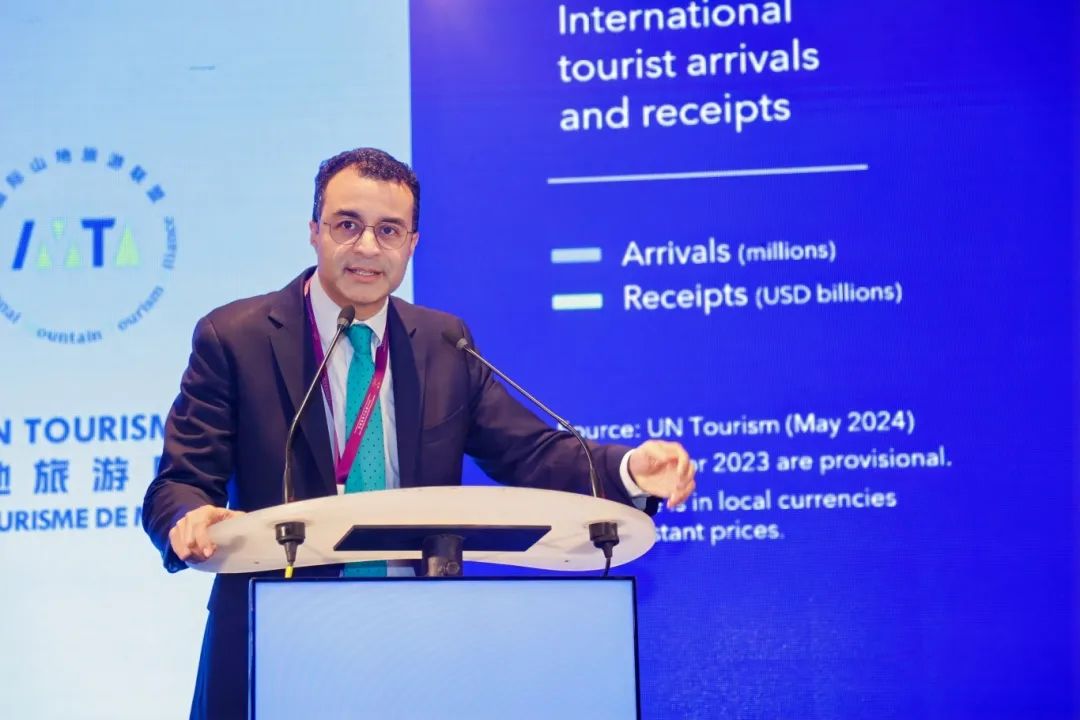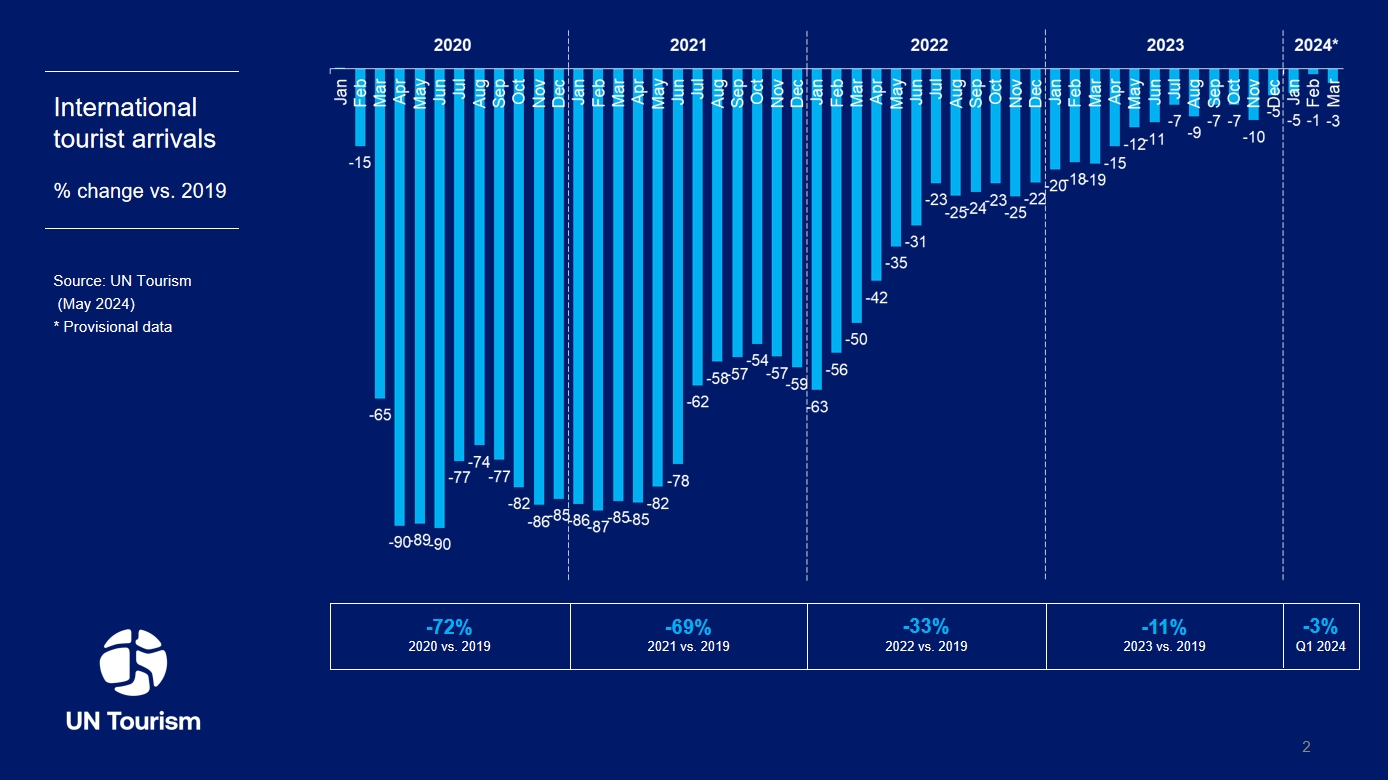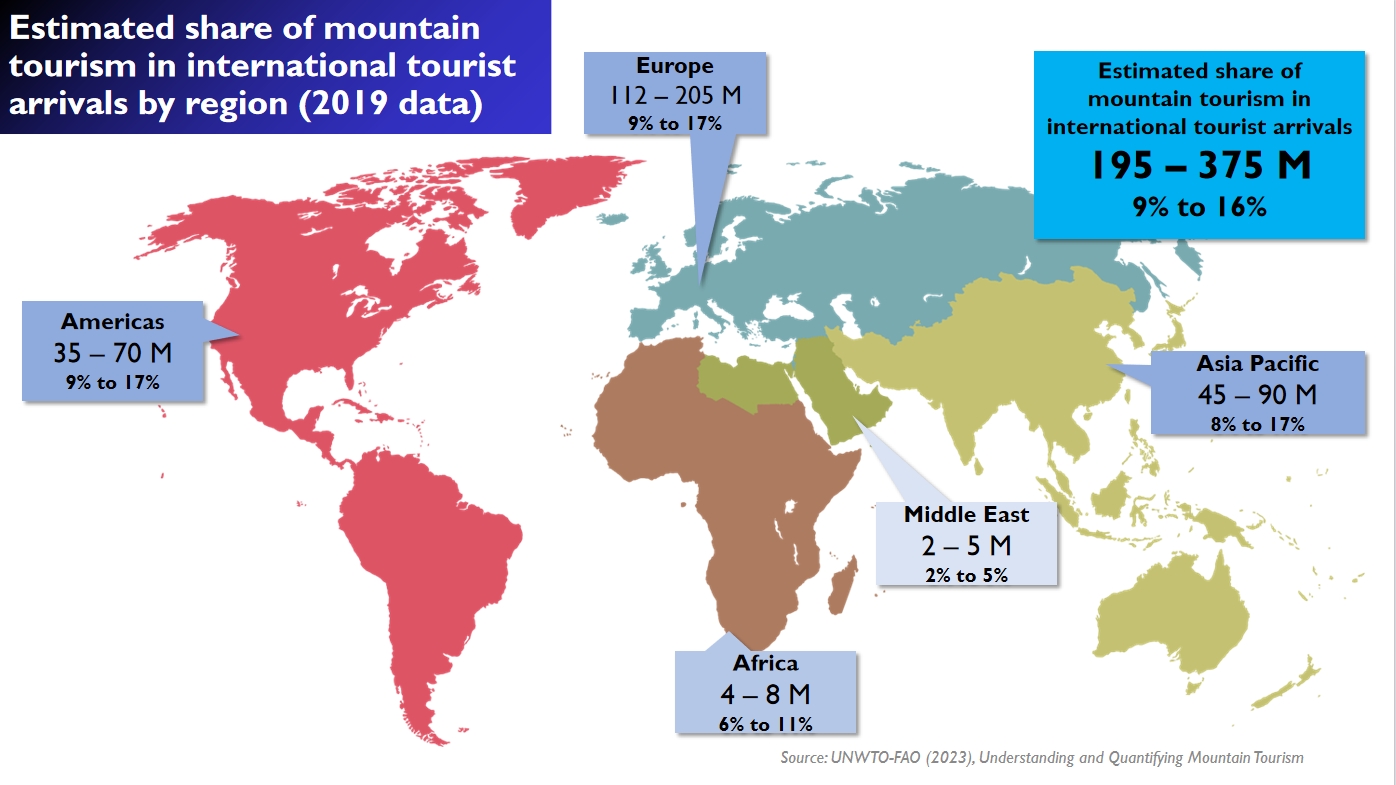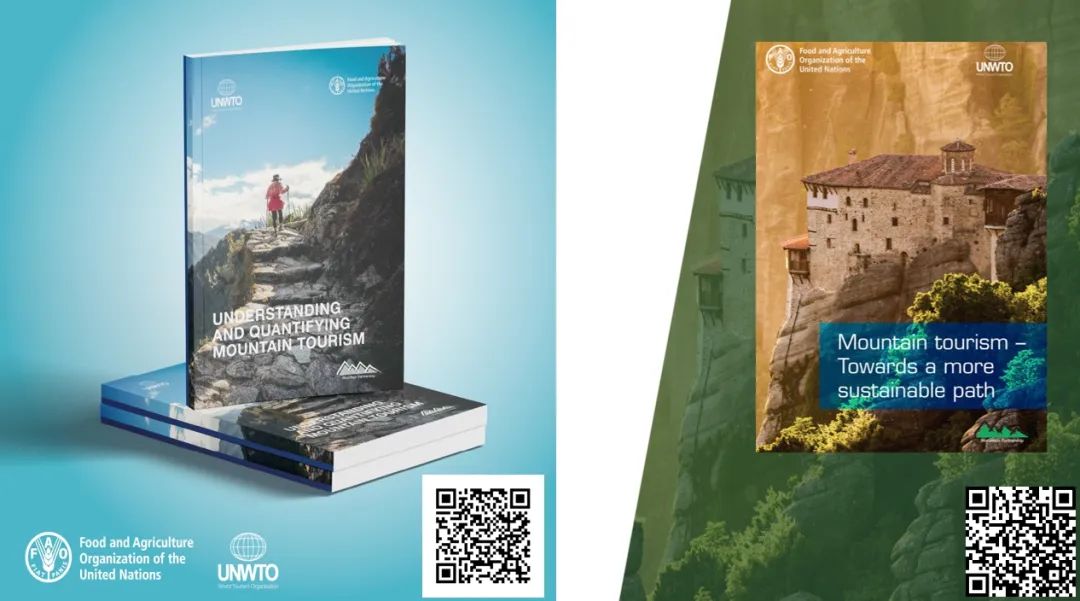On May 29, the "International Mountain Tourism Day (IMTD) 2024" Theme Events were successfully held in Nice, the capital city of the French department of Alpes-Maritimes, France. Representatives of the Chinese Embassy and Consulates in France, the French cultural and tourism authorities, representatives of local government, representatives of international organizations, members of the International Mountain Tourism Alliance (IMTA), tourism agencies, tourism enterprises, industry experts, and media gathered together to discuss and revolve around the theme of "Mutual Understanding among People through Mountain Tourism" and the forum theme "Mountain Tourism Destinations Responding to Climate Change". The rich exchange activities highlight and promote the development concept of mutual learning among civilizations, driving innovation in the "Mountain Tourism+" model.

Michel Julian, Senior Programme Officer at the Tourism Market Intelligence, Policies and Competitiveness Department of UN Tourism presented at "International Mountain Tourism Day 2024" Theme Forum and made a keynote speech headlined "Understanding mountain tourism towards a more sustainable path":

Hello! It is a challenge for me, and I am honored to speak here after the wonderful speeches delivered by my colleagues. I am thrilled to be here in Nice, France for this “International Mountain Tourism Day” Theme Events and share some of our research-based ideas and our understanding of mountain tourism to the greatest extent.
First of all, we need to examine the development of mountain tourism in the context of current reality. At present, there is a lag in our response to the development and changes in this field, and we are still in the stage of post-pandemic impact. International tourist arrivals fell by 72%. However, after four years, we observed certain signs of recovery. By 2023, the number of inbound tourists and overall tourists has recovered to 89% of pre-pandemic levels. This indicates that the first quarter of 2024 will usher in a more stable recovery trend. This recovery trend has been seen in different regions, such as the Middle East, which has already surpassed the pre-epidemic level in 2019, with an increase of 22%. In Africa, the number of inbound tourists recovered to 96% compared with 2019. And Europe, the most popular tourist destination, received 700 million visitors in 2023, of which France received 100 million tourists, up 96% from 2019. The U.S. and Asia-Pacific regions also showed significant signs of recovery on a week-by-week basis, especially with the reopening of Asian markets, including China. When we look at this chart, we can see the recovery of international tourism, but we can also see another form of recovery, that is, the increase in tourist reception. What is emphasized here is not only the number of tourist arrivals but also the reception volume, which means that the average consumption level of tourists during the travel seasons has increased significantly. As a result, global tourism contributed $1.7 trillion in total revenues, bringing significant economic benefits to a number of economies, including emerging economies. In addition, this has also created employment opportunities for groups such as women and young people, and promoted the growth of small and micro enterprises and small and medium-sized enterprises. This is therefore good news for many economies that rely on international tourism.

International tourist arrivals(2020-2024)
According to the Panel of Experts of UN Tourism, They have pointed out that there are now two main challenges: first, economic challenges, and second, geopolitical challenges. Economic challenges involve risks supporting the sustained recovery of annual tourism revenue, including inflation, rising interest rates, increased transportation costs, and rising travel expenses. However, the Expert Committee pointed out an increasingly serious problem, that is, the safety of tourism during extreme weather events. This is noteworthy as it may not only have a potential impact on travel choices, but also on the environment itself. Here are some relevant facts and figures. Briefly, Mr. Geoffrey Lipman mentioned extreme climatic events such as floods, droughts, heat waves, abnormal rainfall, geological landslides in the Tarrant area, and even severe atmospheric turbulence. July 2023 was the hottest month on record, along with record high ocean surface temperatures. From July to September and October 2023, the tourism industry performed strongly, with the number of inbound international tourists reaching 92% of pre-pandemic levels in 2019. How can we effectively respond and adapt to this situation? I always remember the words of Francesco Frangialli, Secretary-General of the United Nations World Tourism Organization, who said that tourism is both a victim and a promoter, especially in its contribution to reducing greenhouse gas emissions. Here is some background information about mountain tourism.

Matterhorn in the Alps
As we have mentioned, the mountainous regions accommodate more than a billion people. This has become a key driving force for travel, attracting more and more tourists to explore its biodiversity and local vibrant culture. However, some mountain tourism destinations showed resilience during the COVID-19 pandemic, especially in terms of developing local or domestic tourism and ensuring the safety of tourists. Tourism is a lifeline for many communities. Therefore, if mountain tourism is well managed, it can protect the biodiversity of these fragile mountain ecosystems. However, we need to quantify this. Both Mr. Prime Minister and Mr. Peter Simon mentioned the need for data. Identifying, understanding, and quantifying the scale of mountain tourism is indeed a challenge. That’s why, together with FAO, we have established a reporting system to learn and assess mountain tourism, and that’s why we mentioned some of the results this morning. According to the report, 9% to 17% of international tourists go on mountain tourism, and this is the figure for 2019. However, as Peter points out, we lack data on domestic tourism, which prevents us from getting a full picture and determining the total volume of mountain tourism and its socio-economic impact. We therefore see that the proportion of mountain tourism varies from region to region and from country to country, as it depends on the main motivations, availability and scale of domestic tourism. It is therefore difficult to categorize tourist destinations based on available data. Here are the responses from those surveyed. This gives us a rough idea of, or at least an estimate of, the scale of mountain tourism.

Estimated share of mountain tourism in international tourist arrivals by region
Simply put, there are many challenges. We lack reliable tourism data, and tourist activities are highly concentrated, resulting in pollution and garbage, and the infrastructure is insufficient to cope with these problems. We also face the challenges of noise pollution and climate change, all of which are related to climate change. In addition, local communities are affected by socio-cultural influences. As our Chinese colleagues have pointed out, tourism has a significant impact on cultural identity and authenticity. There are, of course, economic considerations, as well as health and safety challenges. We must be able to address all these challenges. Therefore, it is necessary to promote low-impact tourism methods in mountain tourism, combined with sustainable tourism. For example, combining food, health preservation and community activities allows the community to play an important role in receiving tourists. Of course, we need public-private partnerships to properly measure the impacts of tourism, to plan better, to better spread risk and distribute tourists over time and space, and to make tourism work for its positive role.
The UN Tourism has implemented a number of initiatives, including, of course, assessments and the development of a statistical assessment framework for tourism to define and quantify the environmental, social and economic impacts of tourism. We also issued the Glasgow Declaration, committing and mobilizing all stakeholders in the private and public sectors to achieve net zero emissions by 2050. Yes, of course, it is not too late to take action, but it must be done together, and all must be clear about that. This is an example of an observatory. As everyone knows, China can take pride in itself because it has joined the UN Tourism International Network of Sustainable Tourism Observatories (INSTO) led by the UN Tourism. China has 8 Observatories, indicating its strong investment in sustainable development. They adopted an efficient core approach, which is very important for them in China.

Reports on mountain tourism issued by the UN Tourism
(Scan the code to see the full report)
This involves linkages between different stakeholders. The focus of the current discussion is tourism, which is an industry with great humanistic care and an activity with a profound humanistic spirit. Safety plays an important role in this. Therefore, indicators are needed to measure its impact on employment, social activities and the economy, among other things. This is crucial because we are here to share best practices, so this is something to know.
Finally, here are our specific suggestions. We have to work together at the local level. As the professor said, we need to cooperate at the regional and international levels, because the Alps do not only belong to France, but also to Switzerland, Italy, or Austria. Similarly, the Pyrenees do not belong solely to France. This is also important to understand. We need to make progress at the international level. And, of course, empowering local communities in mountain regions to act, making them the core of all our policies. We must encourage sustainable development and promote inclusive, accessible and responsible development. That's the key, which means that we will not let anyone fall behind. Thank you all.
Text and photos source: IMTA
Editor Ⅰ: Zhang Wenwen
Editor Ⅱ: Wu Dan
Editor Ⅲ: Liu Guosong














